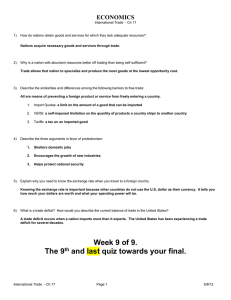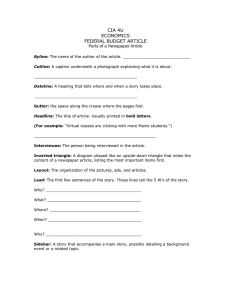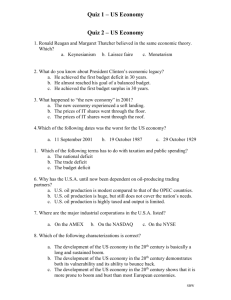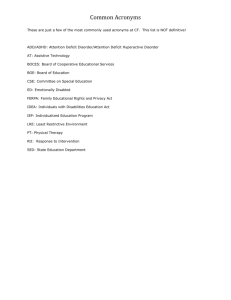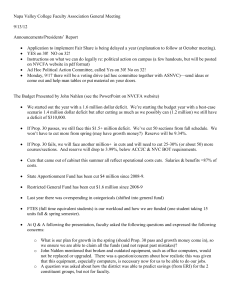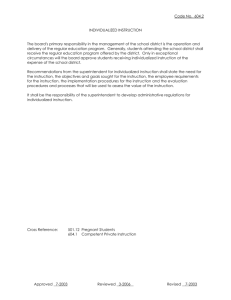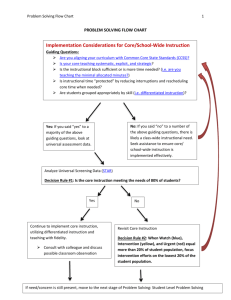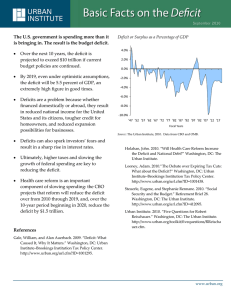Tier-3 Academic Strategies
advertisement
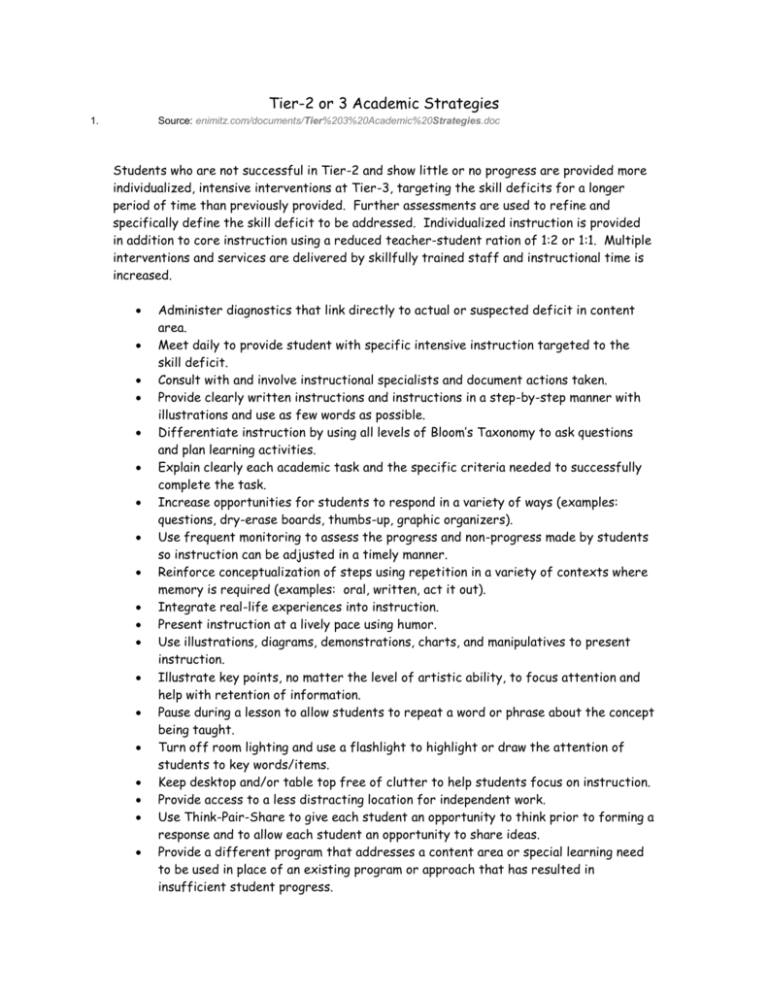
Tier-2 or 3 Academic Strategies 1. Source: enimitz.com/documents/Tier%203%20Academic%20Strategies.doc Students who are not successful in Tier-2 and show little or no progress are provided more individualized, intensive interventions at Tier-3, targeting the skill deficits for a longer period of time than previously provided. Further assessments are used to refine and specifically define the skill deficit to be addressed. Individualized instruction is provided in addition to core instruction using a reduced teacher-student ration of 1:2 or 1:1. Multiple interventions and services are delivered by skillfully trained staff and instructional time is increased. Administer diagnostics that link directly to actual or suspected deficit in content area. Meet daily to provide student with specific intensive instruction targeted to the skill deficit. Consult with and involve instructional specialists and document actions taken. Provide clearly written instructions and instructions in a step-by-step manner with illustrations and use as few words as possible. Differentiate instruction by using all levels of Bloom’s Taxonomy to ask questions and plan learning activities. Explain clearly each academic task and the specific criteria needed to successfully complete the task. Increase opportunities for students to respond in a variety of ways (examples: questions, dry-erase boards, thumbs-up, graphic organizers). Use frequent monitoring to assess the progress and non-progress made by students so instruction can be adjusted in a timely manner. Reinforce conceptualization of steps using repetition in a variety of contexts where memory is required (examples: oral, written, act it out). Integrate real-life experiences into instruction. Present instruction at a lively pace using humor. Use illustrations, diagrams, demonstrations, charts, and manipulatives to present instruction. Illustrate key points, no matter the level of artistic ability, to focus attention and help with retention of information. Pause during a lesson to allow students to repeat a word or phrase about the concept being taught. Turn off room lighting and use a flashlight to highlight or draw the attention of students to key words/items. Keep desktop and/or table top free of clutter to help students focus on instruction. Provide access to a less distracting location for independent work. Use Think-Pair-Share to give each student an opportunity to think prior to forming a response and to allow each student an opportunity to share ideas. Provide a different program that addresses a content area or special learning need to be used in place of an existing program or approach that has resulted in insufficient student progress. Read, stop, and reread to check accuracy and clarify meaning of text. Have students repeat aloud or write responses to clarify and/or document the spoken message. Resource: Response to Intervention Strategies by Michael L. Lujan, M. Ed.

